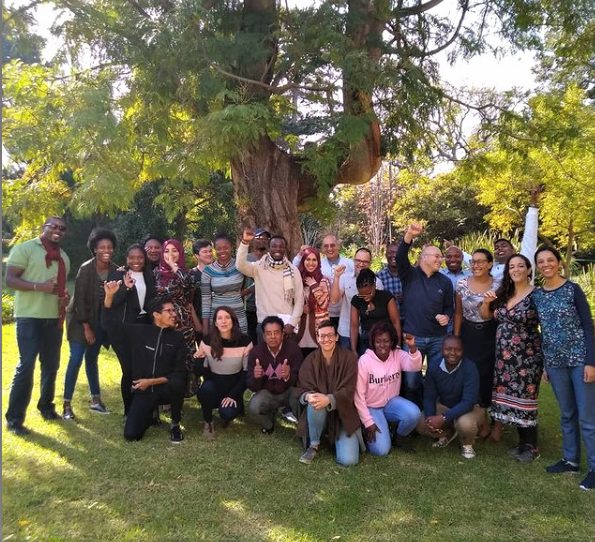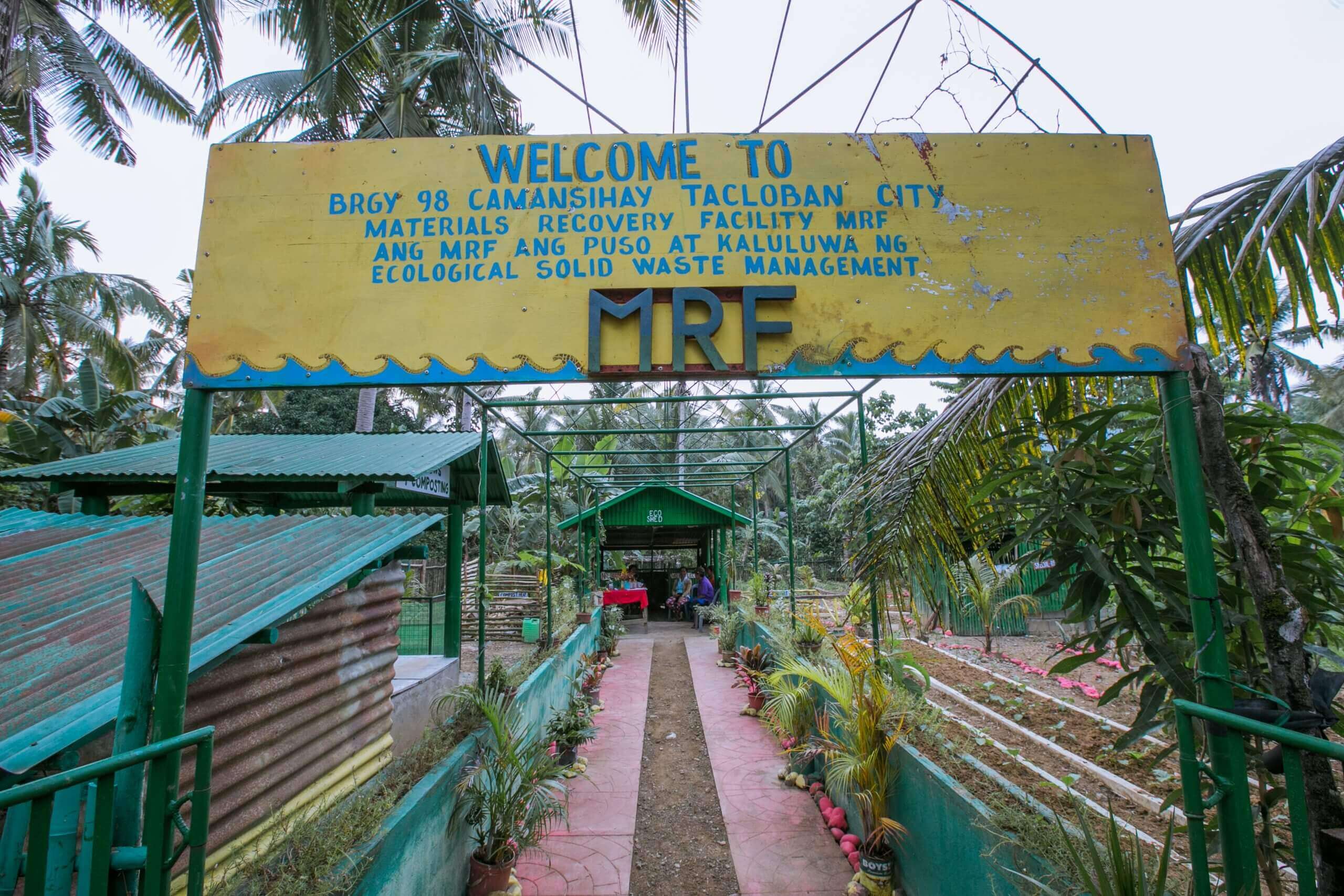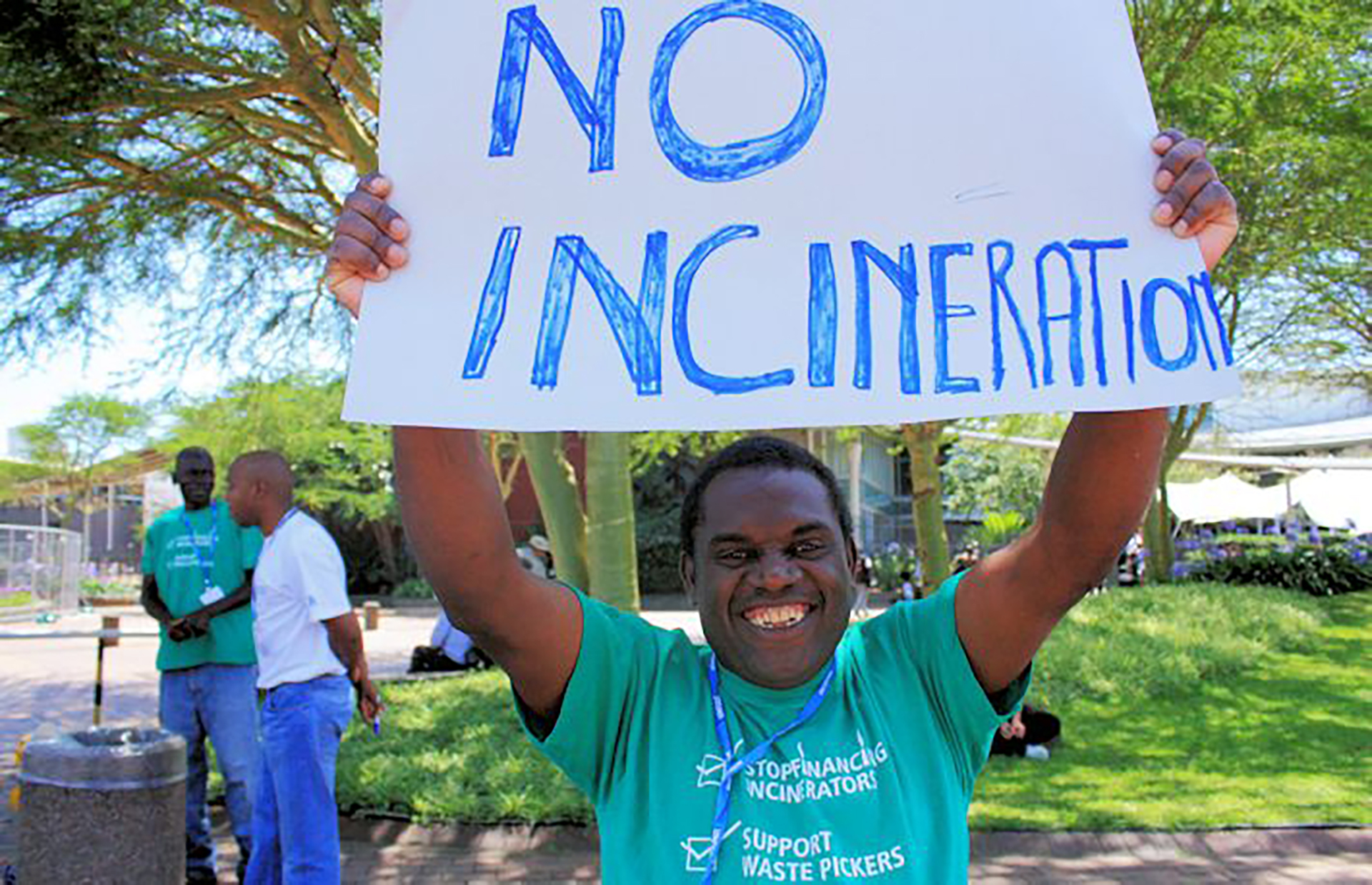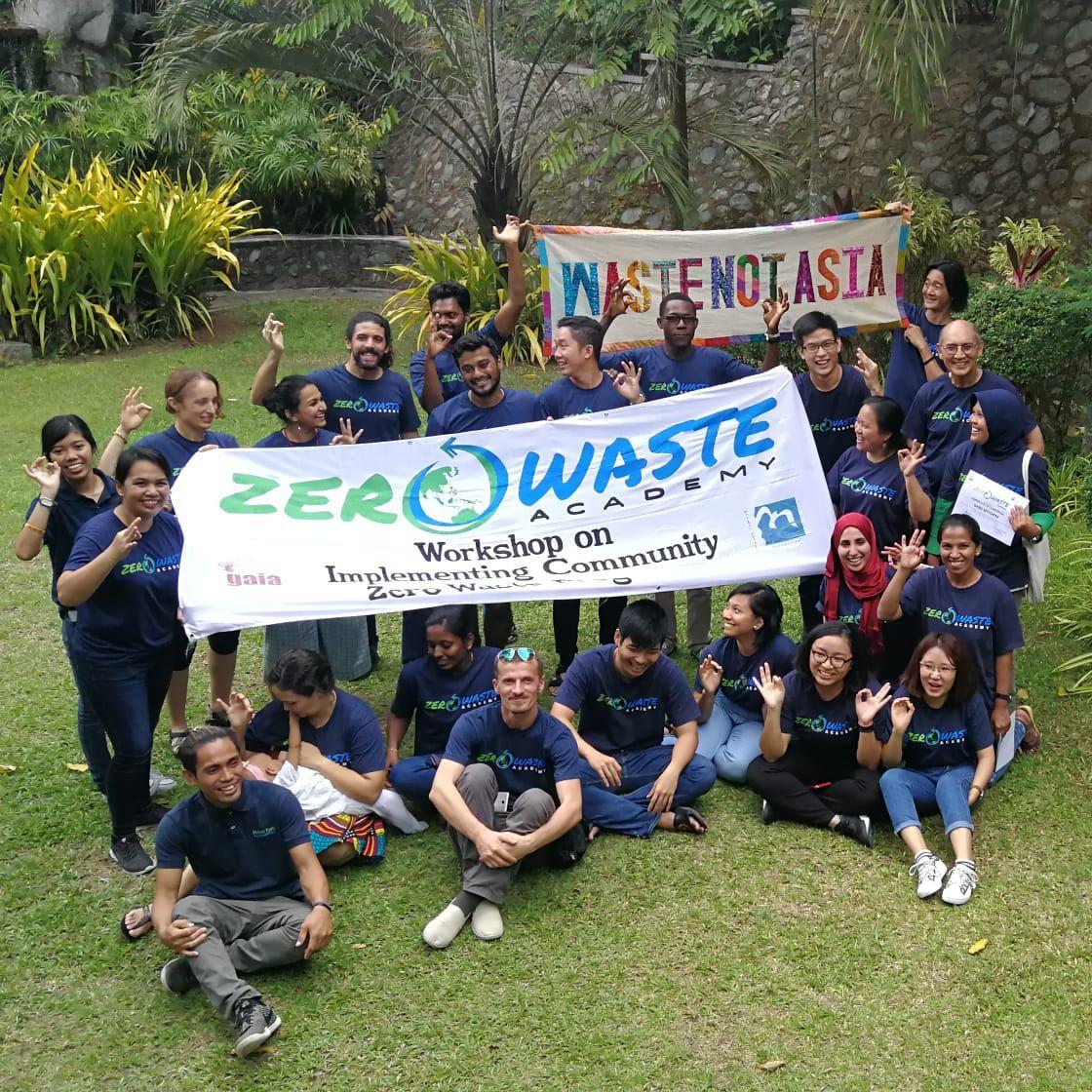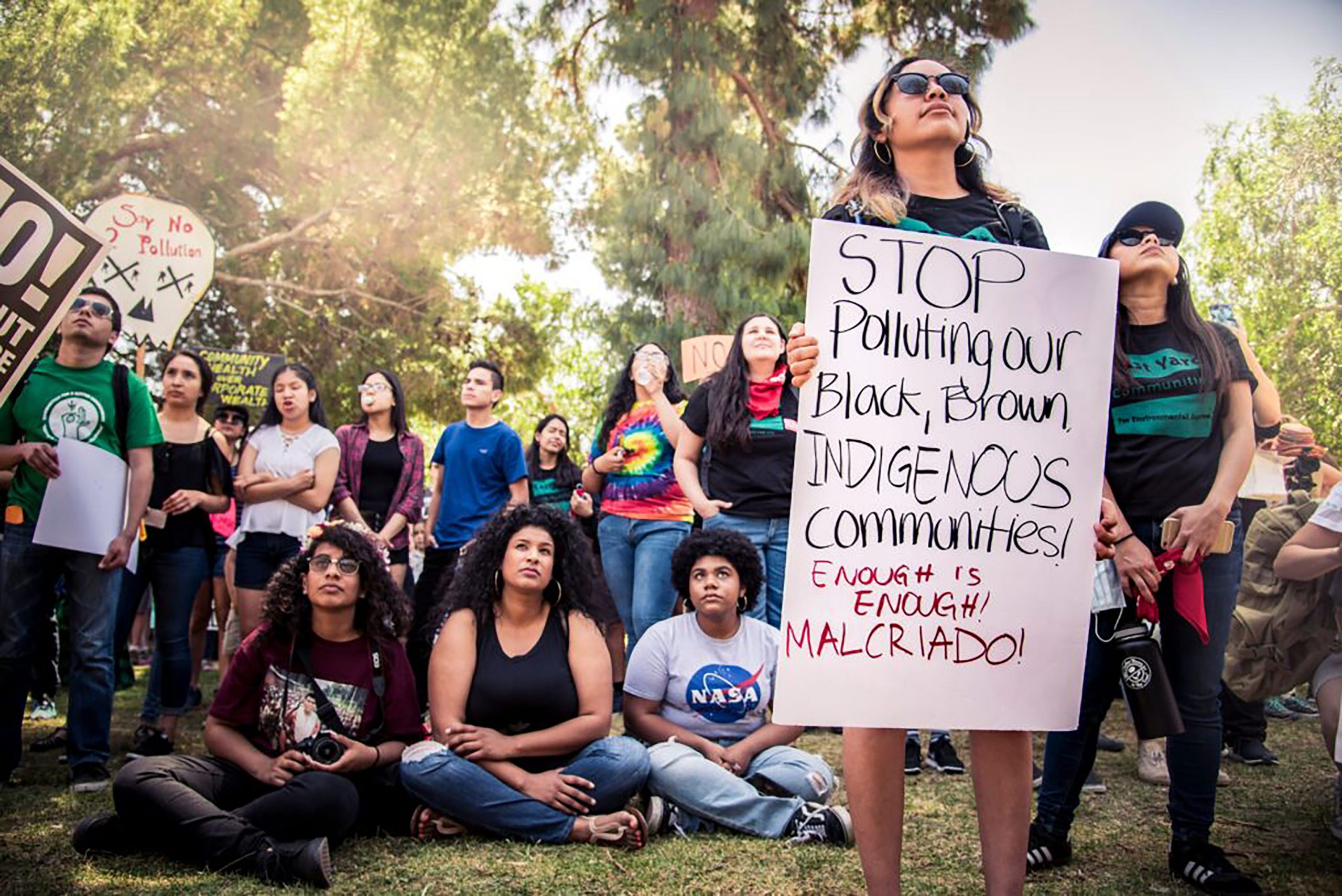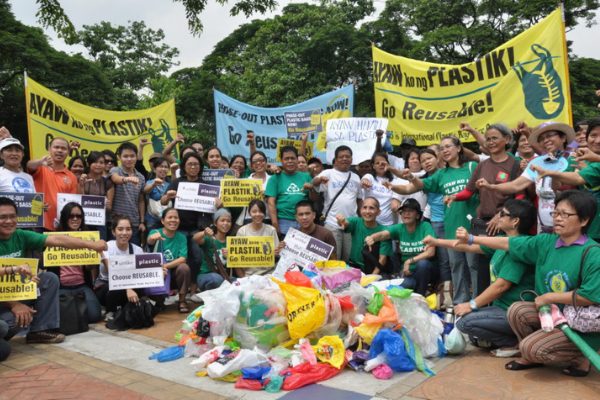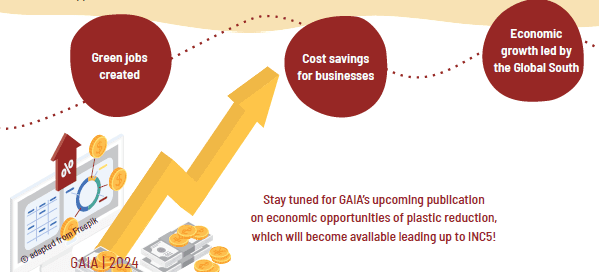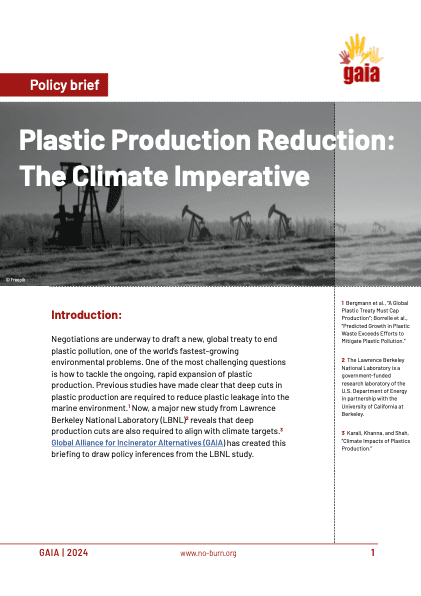Developing solutions for plastic pollution becomes more and more urgent with each new ton of plastics produced. At the same time, the increasing global spotlight on marine plastic pollution in particular has spurred growing interest in strategy development for the Asia Pacific region. This month, the Ocean Conservancy — a Washington D.C. based NGO — released their latest report The Next Wave, which lays out a blueprint for a collaborative approach to reduce leakage of plastic waste into the oceans by 50% by 2025. The report outlines the problem of plastic pollution in strong terms, and emphasizes the urgent need for solutions that reduce plastic pollution through improved waste management.

As a network of leading zero waste implementers and advocates for pollution prevention, we believe that effective strategies to combat plastic pollution must be about more than waste management. This is not to say that dealing with waste already in the system isn’t critically important, but it must be done in a way that encourages redesign and reduction efforts.
This document aims to contribute to an ongoing policy discussion and debate about the primary focus of efforts to reduce plastic pollution. Through it, we hope to share knowledge from the field, as well as to examine the implications of the models in The Next Wave and explain why we believe another investment path is necessary.
Common principles in the fight against plastic pollution
Like Ocean Conservancy, we echo the urgent need for plastic pollution solutions. We agree with many of the priorities outlined in the report’s introduction and opening letter from Ocean Conservancy CEO Andreas Merkl, including the statement: “we believe that we must focus on a long-term, systemic and global strategy to combat the rising tide of plastic waste before it enters the ocean. Clearly, that long-term strategy is an economy designed to eliminate waste and pollution.” We also believe that working with cities on immediate solutions to plastic pollution is critically important, although we believe that this needs to go beyond waste management to zero waste systems that send messages up the supply chain, reduce plastics production, and encourage responsible design.
On specifics, we are heartened by a number of the principles that Ocean Conservancy committed to, including: environmental and social responsibility, minimization of lock-in, emphasis on principles of circularity, and respect for national and local laws and conditions. Finally, the report states that “incinerators and landfills are rarely the solution,” and emphasizes inclusion of waste pickers as well as other solutions models that organizers in the Asia Pacific region have successfully implemented. We appreciate the Ocean Conservancy’s effort to highlight these approaches.
Going beyond waste management: The need for plastic reduction
At the same time, however, the report’s specific strategies and recommendations to investors and governments fail to meet Ocean Conservancy’s stated commitments on a variety of levels.
After describing the need for “an economy designed to eliminate waste and pollution,”The Next Wave states “This report is principally concerned with only the waste management aspect of the solution set. This is because it is written from an ocean perspective, and we need fast action to keep plastic waste out of the ocean.” For the bulk of the remainder of the report, there is a principal focus on waste management strategies, and the core financial model of the report is based on investment in waste management technologies.
While we agree that working with cities on waste systems is a critical and urgent need, it is imperative that these systems move beyond a focus on management to send the right signals up the value chain. Zero waste models — including improved collection, recycling, composting, reuse, bans, and limited landfilling or containment of residual plastics when necessary — quickly reduce the amount of plastic entering the ocean. These are “fast acting” solutions, and the fact that they are cost-effective also makes them timely. Yet the ultimate goal of a zero waste system is not just to responsibly manage waste — rather, it is to understand our waste streams, identify problematic materials, and eliminate those products which do not fit into this system.
Because the discards with highest potential to leak into the oceans are flimsy and without value in recycling markets, there are virtually no responsible management options for them. These cheap plastics and packaging will either create air pollution (through burning), land pollution (through dumping), or marine pollution (through “leakage” into waterways). Zero waste systems are designed to gather data about poorly designed packaging and products, making them visible so they can be redesigned and phased out to reduce the likelihood that they will become pollution. Plastic bag bans and tariffs, as well as expanded polystyrene and other material and product bans, have also shown to be particularly effective in some countries and cities. These solutions can have an immediate impact.
Specific Technology Concerns
In contrast, two of the three waste treatment models highlighted in The Next Wave— both of which are based on gasification technology— aim to create systems that would give marketplace “value” to cheap, non-recyclable plastics. Because gasification systems would need this feedstock to function, investments in this technology could create perverse incentives for the continued production and use of materials that would better be redesigned or phased out. Gasification also has a track record of repeated failures, even after three decades of investment and experimentation.
As is described and cited in GAIA’s new report — Waste Gasification & Pyrolysis: High Risk, Low Yield Processes for Waste Management — this technology also undermines the Ocean Conservancy’s own stated goals:
- The Next Wave calls for investments that increase the value of the waste stream, but gasification has not proven itself to be a technology that creates value from waste. Instead it has high costs, and generally does not produce the expected energy. There are numerous examples of plants that have been forced to shut down through technical failures, economic failures, or local resistance, and as a result there is little operational data available. Existing evidence shows that gasification projects regularly fail to meet projected targets for energy generation, revenue generation, and emissions limits. On the flip side, recycling and composting conserve 3-5 times the energy that incinerators generate [1].
Investment and budget implications of gasification
Because The Next Wave is a report about investment, its financial modeling is particularly important. Unfortunately, two of the three modeled scenarios assume that the public is going to pay an enormous amount of money for a highly inefficient, operationally problematic, and polluting form of energy generation.
In order for the gasification facilities in these scenarios to be profitable, governments would need to commit to buying energy from such facilities for 20 years. Yet as Waste Gasification & Pyrolysis shows, gasification facilities notoriously fail to meet projected energy targets and numerous facilities have shut down due to technical failures, creating an uncertain situation for cities and risking public debt.
Taking the Philippines as a case in point, the deployment of gasification technology would cause major financial burdens for cities and residents. According to the financial assumptions and cost data included in The Next Wave, if gasification infrastructure was applied more generally in population dense areas of the Philippines, the total upfront capital costs nationally would be over USD $2 billion. These costs would need to be paid by someone, either through loans, city contracts, or external investment.
In order to pay back these capital costs, the report assumes that energy generation from the facilities would create income. Using data provided in the report, at current energy rates without feed-in-tariffs the total energy purchasing cost to the public for this plastic-to-energy scheme would be over USD $600 million per year.
In addition, because gasification is a high-cost, low-yield technology, there have been calls to provide additional subsidies for this technology. Feed-in tariffs, a type of energy subsidy designed to support renewable energy sources, are ultimately paid for by the public through higher electricity costs or contributions from the national budget.
Gasification is a perverse interpretation of the purpose of feed-in-tariffs, and a global coalition of environmental organizations has released a sign-on statement opposing this practice. Burning or heating plastics for energy is the equivalent of burning a fossil fuel, and the opposite of renewable energy. Almost all plastics, especially in developing countries, are derived from oil, gas, or coal, and burning them releases pollutants and greenhouse gases. Feed-in tariffs should support low-carbon, healthy sources of energy, not the combustion of fossil-derived resources.
Both The Next Wave and the company whose data is modeled in the report claim that feed-in-tariffs can be applied to subsidize municipal “waste-to-energy” in the Philippines. However, according to Philippines law, gasification of plastics is not eligible for feed-in-tariff subsidies. Hence the use of these subsidies would not only undermine progress on renewable energy, but would also violate national law.
Despite this fact, one of the scenarios highlighted in The Next Wave models applying feed-in-tariff subsidies to further support gasification-generated energy and may encourage high risk investment. This would cost an additional USD $550 million per year, taken from funds designated for renewable energy. Adding this feed-in-tariff expense to the baseline electricity costs noted above would require people of the Philippines to spend a total of over $1.15 billion annually for widespread use of waste gasification.
It is irresponsible to ask the public to pay billions of dollars for gasification as an energy source.
A Sea of Opportunity
Encourage Capital, an impact investment firm, also released a report this month titled A Sea of Opportunity, which identifies investment opportunities to reduce marine plastic pollution. The report covers a variety of intervention strategies across the lifecycle of plastics from source through use and waste management.
We recognize the necessity of many of these strategies, including investments in better materials, product redesign, and circular business models, as well as in zero waste systems and the informal waste sector. It also describes an important role for non-investor stakeholders, including government policy makers, philanthropy, and civil society groups. Finally, the report states that “for some products and packaging, the best option may be to move away from plastic completely.” When A Sea of Opportunity describes gasification and pyrolysis, it provides thoughtful cautions, and suggests that due to operating conditions, gasification and pyrolysis for waste are “best-suited for deployment in OECD countries, at least initially, or until there are further technology developments.”
At the same time, two of the investment strategies outlined in A Sea of Opportunity include data and thinking that is also in The Next Wave and is critiqued here. The report highlights a gasification model from The Next Wave as a potential investment opportunity in the Philippines, which is clearly not an OECD country. In addition, investing research and development funding into waste-to-energy technologies could increase pollution and divert much-needed resources from solving the problem of plastic pollution no matter where plants are built. The recent risk analysis in Waste Gasification and Pyrolysis describes decades of failed efforts to control emissions even in optimal regulatory environments.
Investors should also note that while the report suggests gasification could contribute revenue to local systems, GAIA’s research into system track records has found that there is a high risk that gasification systems would continue to cost more than they would bring in from revenue sources.
Finally, as the report mentions expansion of ‘waste-to-energy’ incinerator capacity in China and also calls for high environmental standards, investors should note that a 2015 report on China’s 160 existing and operating MSW incinerators found that 40% have incomplete air emission data and only 8% have dioxin emission data available to the public. Among those that have incomplete data, 69% have a record of violating current environmental standards.
In sum, readers should focus on A Sea of Opportunity’s is ideas for investment in upstream interventions, and read carefully the report’s warnings about investments in waste to energy.
Conclusion
With plastic production predicted to double in the next 10 years, we should not be steering investors toward spending billions of much-needed dollars on non-functioning waste management schemes. Deploying an expensive and dysfunctional technology to imbue value to no-value plastic waste is a losing proposition. To encourage continued investments in this concept is a distraction from the real solutions we need.
Our common goal must be reducing production of plastics, and providing opportunities for investment in this. Redesigning and phasing out the cheap, non-recyclable plastic entering the system is absolutely the best thing we can do to protect our oceans. At the same time, if we are serious about reducing plastic leakage in the short-term while simultaneously advocating for responsible design, we should immediately scale up investments in effective and innovative zero waste solutions.
The Next Wave’s models do count value from materials collected by waste pickers for recycling, a step that is already happening in many places. With scaled up investment in these systems and in city-level zero waste programs, we could dramatically reduce plastic pollution at a fraction of the cost of building gasification facilities across Asia, with major benefits for public health, the environment, and our oceans.
We simply cannot be constantly searching for new ways to manage an ever-increasing amount of waste— if we do, we will never be able to truly protect our communities and our oceans.
[1] Morris, Jeffrey, Comparative LCAs for Curbside Recycling Versus Either Landfilling or Incineration with Energy Recovery, The International Journal of Life Cycle Assessment, July 2005. Available at: http://www.springerlink.com/content/m423181w2hh036n4
